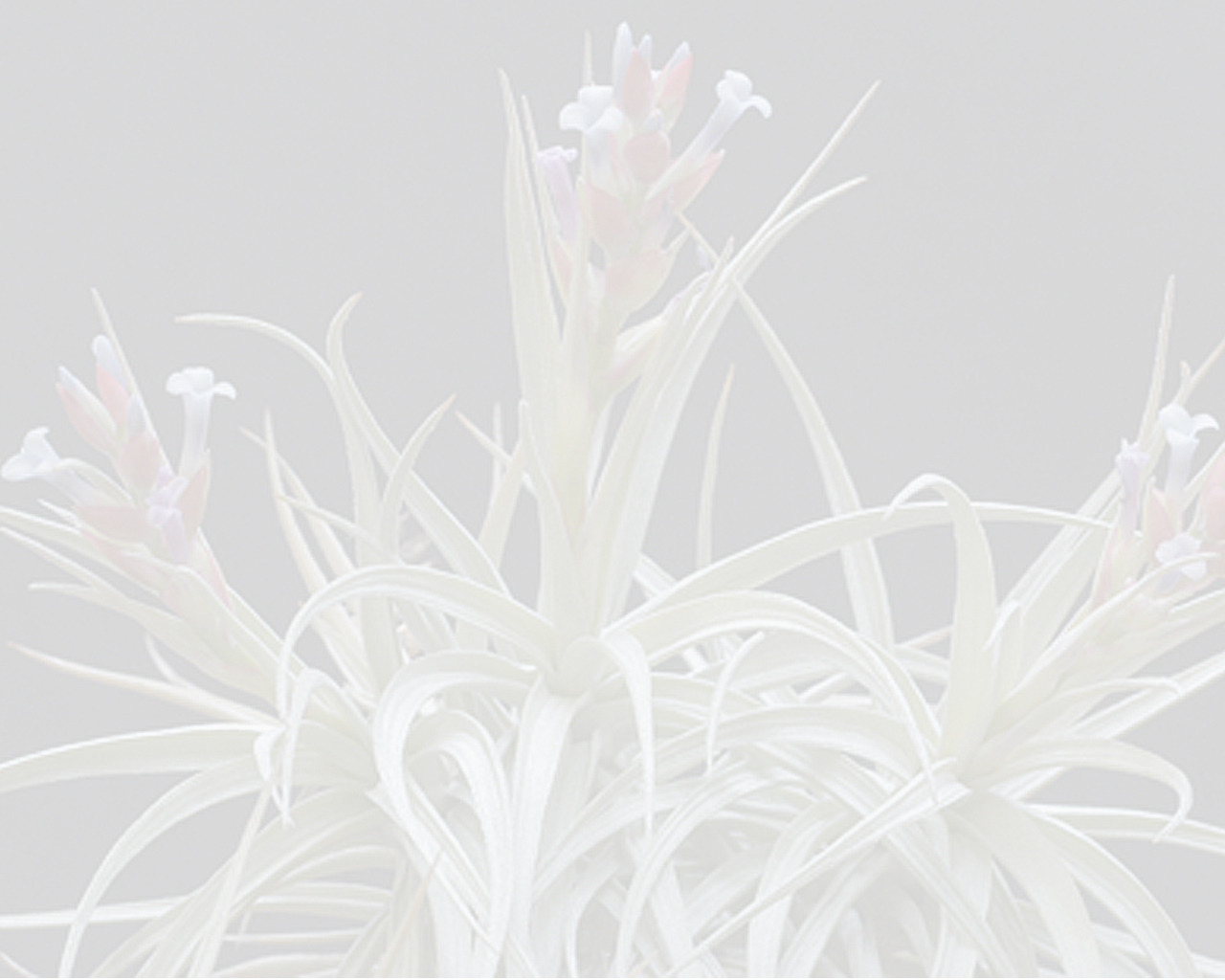

plant forms groups of several stemless rosettes, which are, when flowering, not higher than 30 - 35 cm. leaves narrow-triangular recurved, about 25 cm long; sheath lanceolate-ovate, 3 - 4 cm long, about 2 cm broad, leather brown lepidote on both sides, with dark red stripes; blade strongly canaliculate, wine red-striped at the base, and green in the upper part. inflorescence: peduncle thin, slightly curved, up to 15 cm long, shorter than the leaves and covered with imbricate arranged peduncle-bracts; peduncle bracts the lower ones are subfoliate, the upper ones only acute, erect, about 3.5 cm long, wine red, with green margins, nerved; fertile part simple, about 6 cm long, 3 cm wide (without the petals) and has 3 - 5 distichous arranged, erect flowers; axis is visible at anthesis, transversal flattened, thin, green; floral bracts erect, up to 4 cm long, acute, inconspicuous carinate, densely adpressed lepidote, wine red with green margins, even, when fresh, but nerved when dry; they are exceeding the sepals, free, membranaceous, acute, up to 3.5 cm long, 4 mm wide, green glabrous, with a hyaline margin. flowers (in full developed bud) 7 cm long and differentiated in a rounded plate and a narrow claw; the plates are spreading, and a full developed flower has a diameter of 4.5 cm; petal-blades are of dark, bright, intensive blue color (like a cornflower) with a white spot at the base; therefore the flower has a triangled white eye; the claw is white, about 3 cm long and form a narrow flower tube of 4 mm in diameter. stamens are deeply included, but longer than the style with the long papillose stigmas.Edited from (30-03-2023): Rauh 1981c. Tillandsia umbellata Andre .